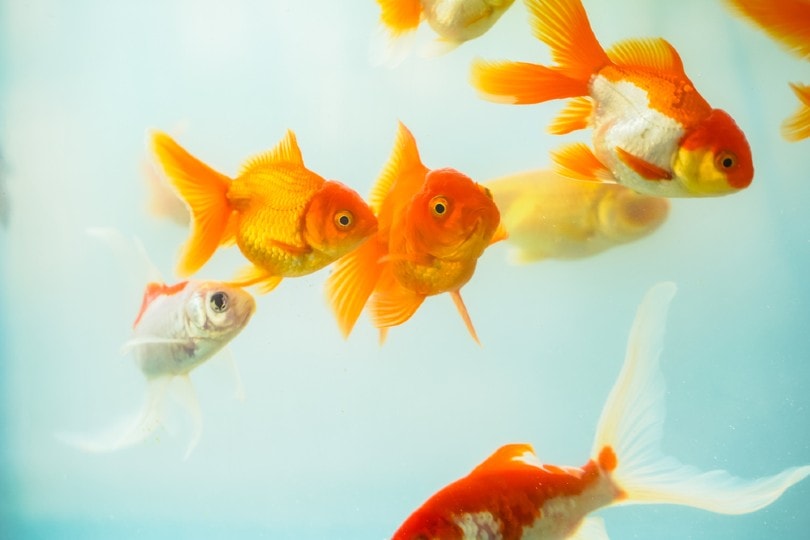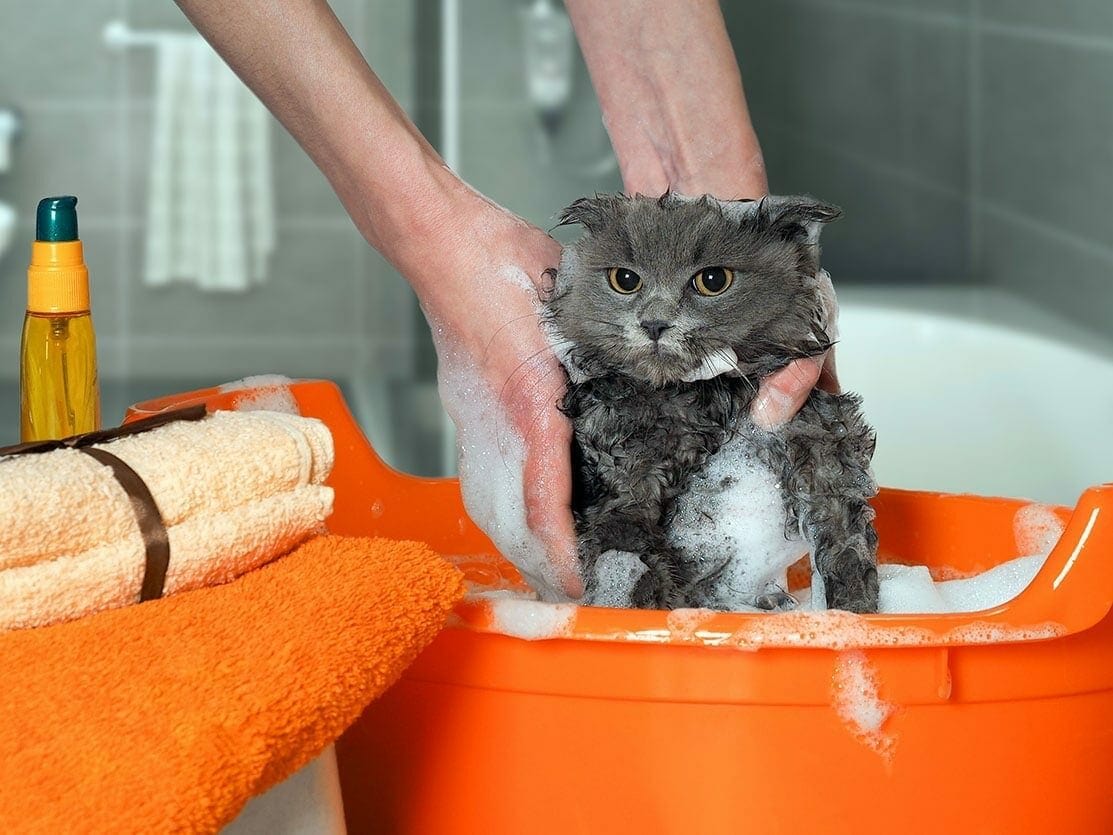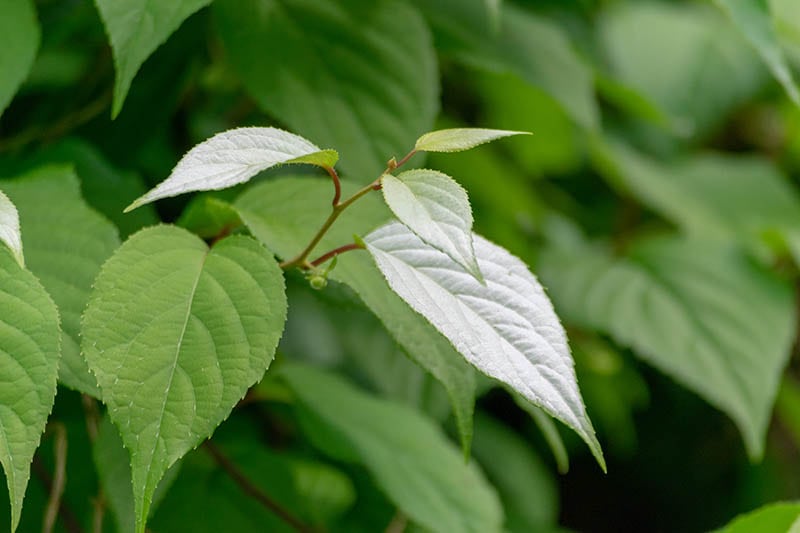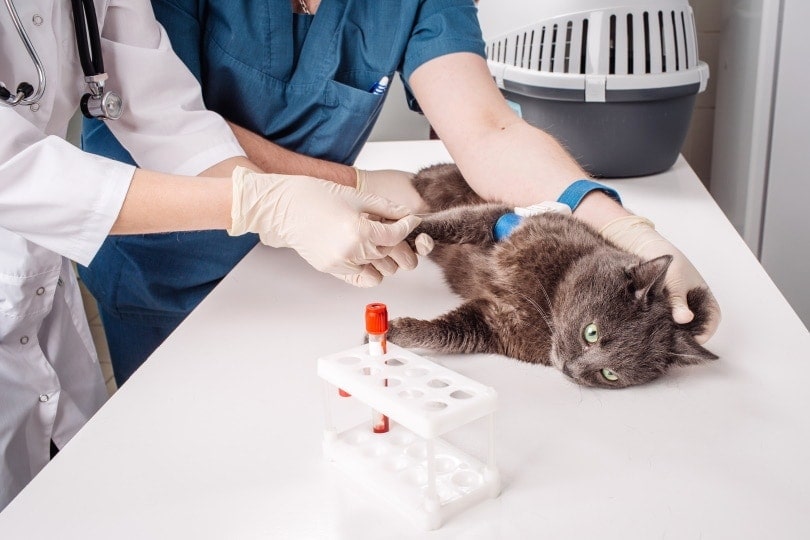VET APPROVED

The information is current and up-to-date in accordance with the latest veterinarian research.
Learn more »Click to Skip Ahead
Have you ever forgotten to empty out the cat’s litter box for a few days, and when you finally start sifting through the litter, you’re slapped in the face with the distinctive smell of ammonia? If you’ve ever smelled ammonia, it’s an unpleasant smell you don’t forget.
Breathing in too much ammonia can cause irritation and damage to your lungs and airway, as well as irritate the skin. Did you realize that your goldfish excrete ammonia, which can build up in the tank and endanger their lives? Here are the things you should know about goldfish and ammonia.

Where Does Ammonia Come From?
Ammonia is a product of metabolic processes in fish that is excreted through the urinary tract in many animals. Goldfish produce ammonia, but their urinary tract functions differently from that of mammals. Ammonia that has been processed through the kidneys is excreted through a urinary pore, which is similar to a urethra.
Ammonia produced by respiration and other metabolic processes is excreted through the gills. Regardless of where the ammonia comes from, it builds up in your tank. Goldfish are very dirty fish that produce a heavy bioload, and they excrete large amounts of ammonia.
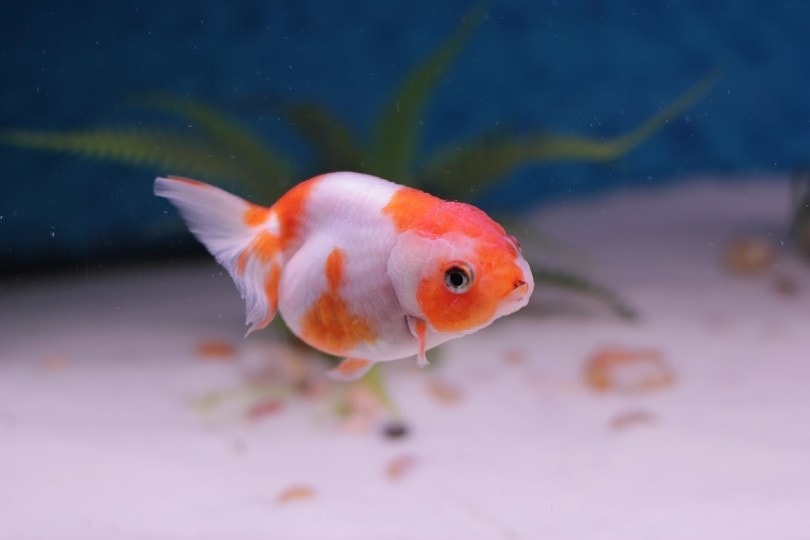
Preventing Ammonia Buildup
So, what do you do about ammonia in your tank? You can use chemical additives in your aquarium that help neutralize ammonia and convert it to a less toxic form. However, if your tank is properly cycled and has adequate filtration, you should not see ammonia building up. Routinely check the ammonia levels in your tank with a reliable test kit.
A cycled tank should always have an ammonia level of 0 ppm. If you begin to see ammonia levels rise, something has happened to your tank’s cycle, and your beneficial bacteria colonies have been negatively impacted.
Beneficial bacteria live on surfaces like filter media and substrate, so if you recently changed your filtration system, filter media, substrate, or other items in your tank, you may have damaged its cycle. Recolonizing the beneficial bacteria and neutralizing the ammonia will help you get your tank back on track.
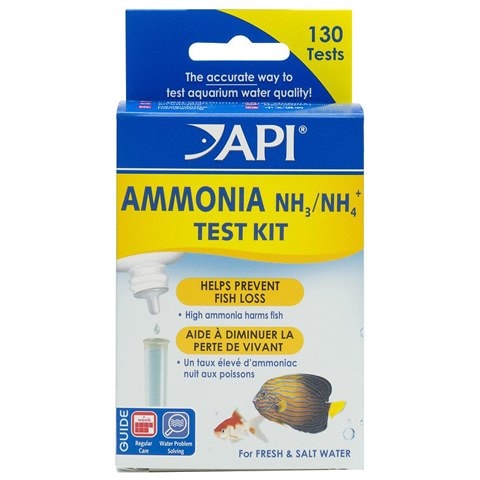
Ammonia Poisoning
Causes
Ammonia poisoning occurs when fish are exposed to high levels of ammonia or experience long-term ammonia exposure. It is also often called “new tank syndrome” because it can occur if fish are placed in a tank that hasn’t been cycled.
Common causes of ammonia poisoning are adding fish to an uncycled tank, a crashed tank cycle, keeping an overstocked tank without adequate filtration, an increase in the water’s pH, and long-term exposure to poor water conditions, like in a feeder fish tank.
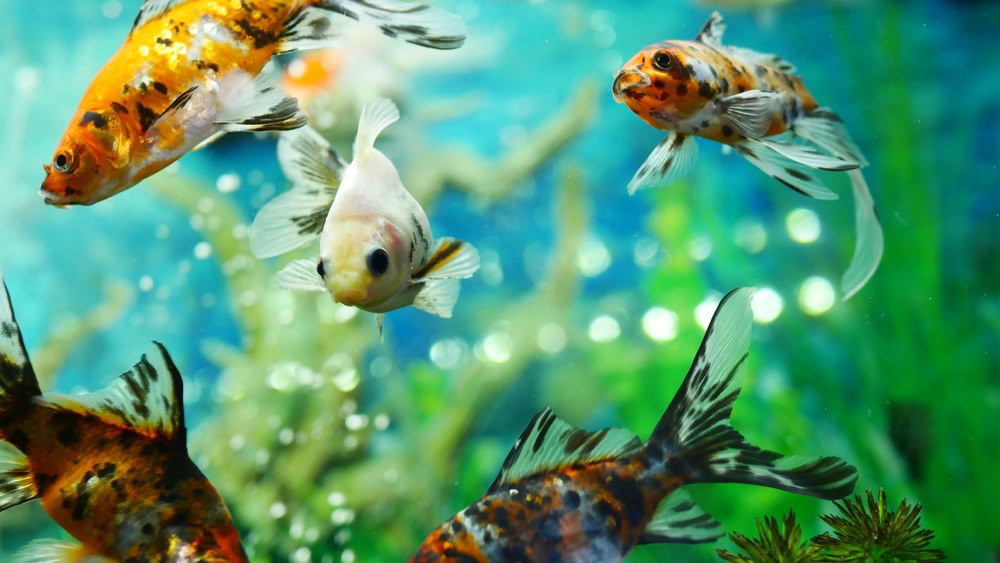
Signs
Many signs can indicate ammonia poisoning, and most of them are obvious and dramatic on the part of your fish (because the condition is very painful).
- Sudden death
- Erratic swimming patterns (also known as flashing)
- Lethargy
- Poorly coordinated swimming
- Refusal to eat
- Heavy breathing
- Gills appearing red
- Gasping at the surface (also known as piping)
Ammonia poisoning can lead to the loss of scales, burns on the skin, and the loss of fins or fin rot. Scales and fins are not guaranteed to regrow, regardless of what you do. There is only one way to definitively determine if your fish are exposed to ammonia poisoning:
- Test the water for ammonia levels. Any reading over 0 is considered unsuitable for pet fish.
Treatment
Ammonia poisoning should be considered an emergency. Prompt intervention improves the likelihood of your fish surviving; however, losses are sometimes sudden, and recovery isn’t always entirely possible.
- Immediately perform a large water change of around 30%–50%.
- Water changes and ammonia tests should be repeatedly performed until ammonia levels are at 0 ppm or 0 mg/L (depending on the kit you use). Depending on the size of your aquarium, you might have to change the water every 4–6 hours to keep your fish safe.
- Stop feeding your fish temporarily.
- If your tank is overstocked, consider reducing the stock size by moving some fish to another tank or switching to a larger tank.
- Heavily oxygenate the water using air stones and powerful filtration.
- If your tank’s pH is alkaline (over 7.0), use a product to bring it as close to 7.0 as possible.
- Add commercial ammonia binders, aquarium salt, and nitrifying bacteria. Follow the dosing instructions on the product labels. Some products might require carbon filtration to remove them from your aquarium. Activated carbon can be added to most filtration systems to do so.
- Contact your aquatic veterinarian for any secondary issues or diseases that occur due to the poisoning.
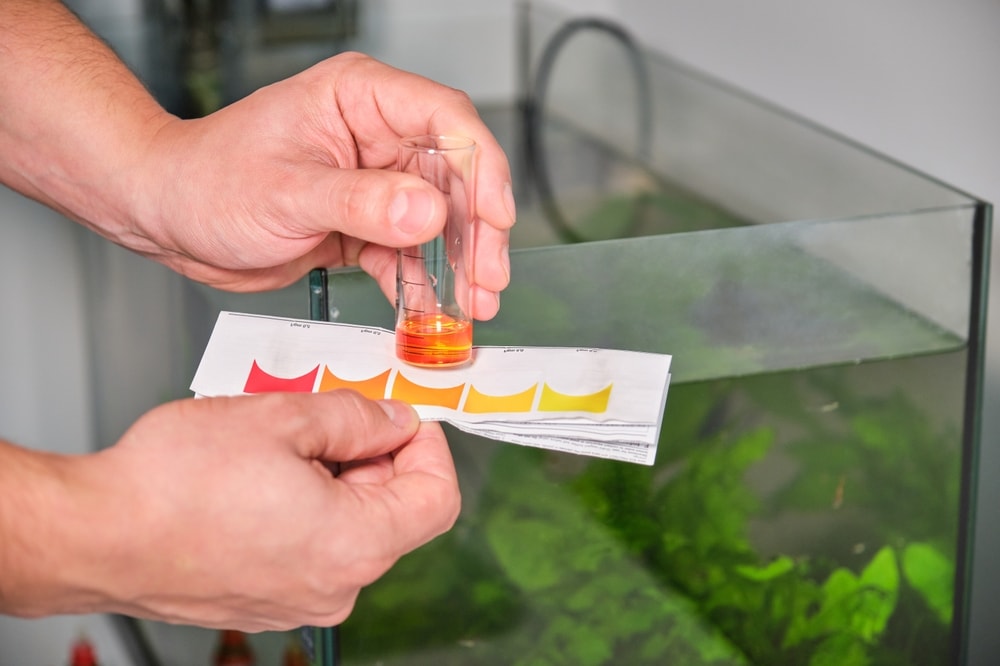
Many fish recovering from ammonia poisoning will begin to develop black patches on the scales and fins. Check your ammonia levels if you notice new black patches on your fish. Black patches can develop as the body attempts to heal from ammonia burns, even if the ammonia levels are still elevated. Black patches do not mean the ammonia levels are back down to zero.
Prevention
As is the case with many poisonings, prevention is much easier than treatment.
- Only add goldfish to an appropriately sized cycled aquarium. This ensures that the tank’s bioload isn’t too high and that sufficient bacteria are present in the filter and on other surfaces to handle the waste produced by your goldfish.
- Do not use chemicals or attempt to “scrub” the biological media cartridges in your filter.
- Stay on top of water changes and water-quality checks. You should change the water in an appropriately stocked aquarium at least once a week.
- Never let uneaten food rot in an aquarium, as this can cause an ammonia spike.
If you are looking for help to get the water quality just right for your goldfish family in their aquarium, or just want to learn more about goldfish water quality (and more!), we recommend you check out the best-selling book, The Truth About Goldfish, on Amazon today. It covers everything from water conditioners to tank maintenance, and it also gives you full, hard copy access to their essential fishkeeping medicine cabinet!

Final Thoughts
Ammonia is one of the most common killers of goldfish, especially when inexperienced keepers are unaware of the danger. Elevated ammonia levels are part of “new tank syndrome,” which can be avoided by proper tank cycling, filtration, and water maintenance.
If you notice any signs of ammonia poisoning in your goldfish, your first course of action should be to check your water parameters and, if ammonia is present, treat your tank for elevated ammonia and begin treating your fish by supporting immunity and slime coat. Remember that even though we are used to smelling a strong smell in the presence of ammonia, you will not see or smell ammonia in your fish tank, so you can’t rely on sight or smell to detect it.
Featured Image Credit: Nature and Life, Shutterstock
